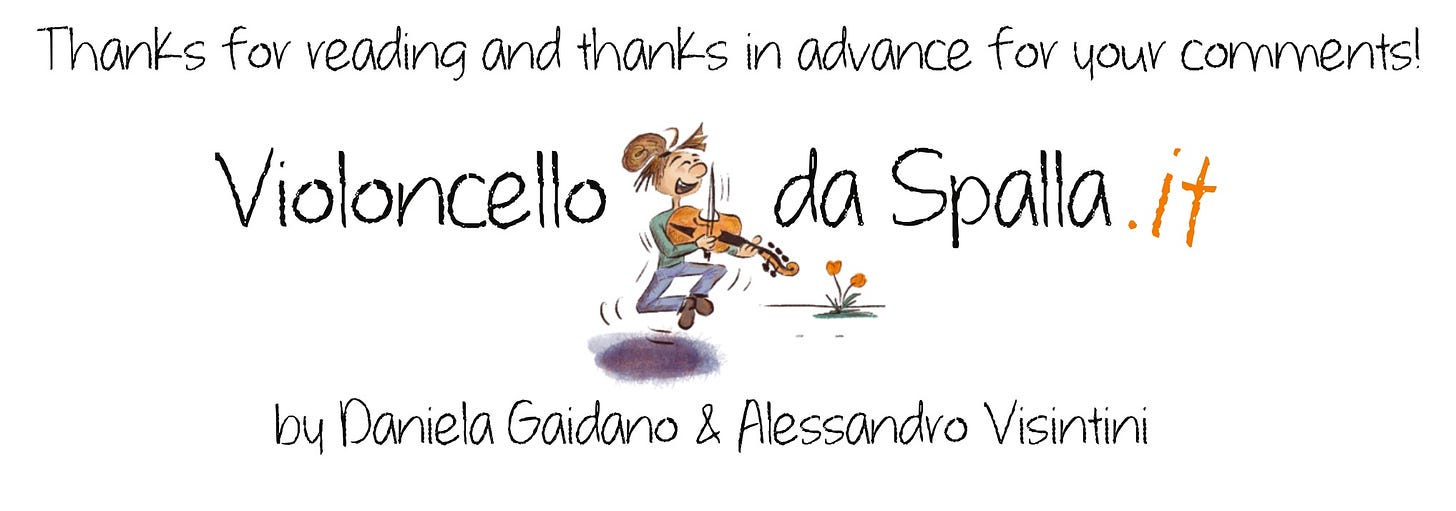Bleib bei uns, the Easter-Monday cantata (J. S. Bach Cantatas - part 4)
A beautiful virtuoso violoncello piccolo part.
This Cantata is the fourth with an obbligato violoncello piccolo part. It was written for Easter Monday of 1725, so four months after the last time he used a Violoncello piccolo. It was probably performed again two years later.
This cantata is written on the words of the Lutheran corale “Stay with us, Lord Jesus. It soon is evening, and night is falling.” The corale itself is in the third movement, a soprano aria with the violoncello piccolo obbligato. Again, Bach uses the violoncello piccolo in a moment of direct dialogue with the Lord.
The range of this cantata is from G2 (it makes no use at all of the C string) to C5, so third position first string. The part is virtuosic, full of strings crossings and fast passages, which would be very demanding for not performing strings. Both for the range and for the strings crossings and jumps, it feels very violinistic. In the original sets of parts, the solo was written in the first violin part.
I find very interesting what Koji Otsuki writes about this in his work “J. S. Bach’s Violoncello piccolo.”
The copyist for this part is Johann Andreas Kuhnau (1703-after 1745)7, nephew of Johann Kuhnau, Bach's predecessor. He is also the copyist of the BWV 41 violin part in which the violoncello piccolo part was written with the treble clef. One may wonder why he did not transcribe this violoncello piccolo part in treble clef as in the previous time, when he must have realised he was copying the part for a violinist. The reason should be simply that because, in the score, the violoncello piccolo notes were written in alto clef. […] a violinist may find it confusing to read the violoncello piccolo part in alto clef if the player is used to playing the viola. Interestingly, presumably for a repeat performance, a new part in treble clef was prepared, and it is written on the other side of a viola obbligato part for No. 2 which was for the oboe da caccia in the first performance. It is plausible that in the repeat performance, the violinist or violist who also played the No. 2 obbligato on the viola might have found the part in the alto clef too confusing to read from, and asked for a part in treble clef.

As a side note, “Bleib bei uns, Bach” is the title of a book written by Sigiswald Kuijken on his lifetime relationships with Bach. I find it moving that he chose this title to describe his own musical life and development.
I didn’t find a video recording featuring the cello da Spalla, but I have two beautiful sound recordings: by Sigiswald Kuijken and by Dmitry Badiarov. Enjoy!
News from da Spalla world
A Violoncello da Spalla (made by me, Daniela Gaidano, in 2021) is available to try at Celebrating Women Luthiers international exhibition, only for this weekend at Huthmaker Fine Violins in Suwanee, Atlanta.

Updates from our workshop
Alessandro’s cello is playing! And it has a towering voice, with powerful basses and melodious trebles! As we were kept home from covid positive tests, we settled Alessadro’s cello and played together every day.
Featured video of the week
Enjoy this Violoncello da Spalla version of the J. S. Bach famous “flute” Sonata BWV 1030. At the viola da spalla Francçois Fernandez, cembalo Benjamin Alard.








